Alyssa M Adams
Two Ways of Understanding Social Dynamics: Analyzing the Predictability of Emergent of Objects in Reddit r/place Dependent on Locality in Space and Time
Jun 02, 2022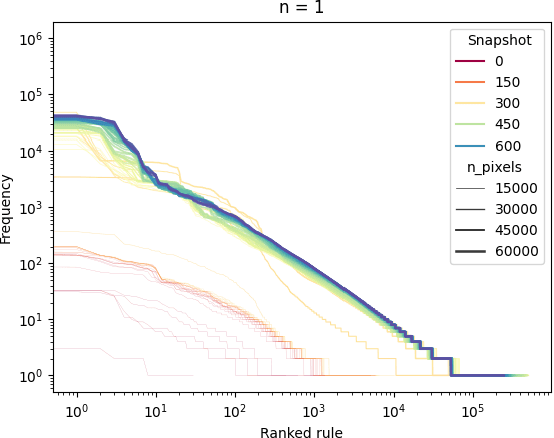
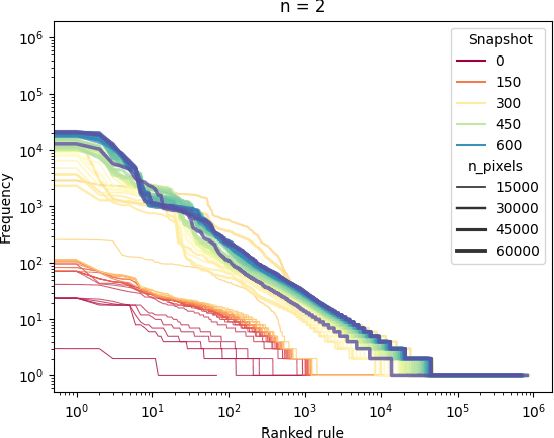
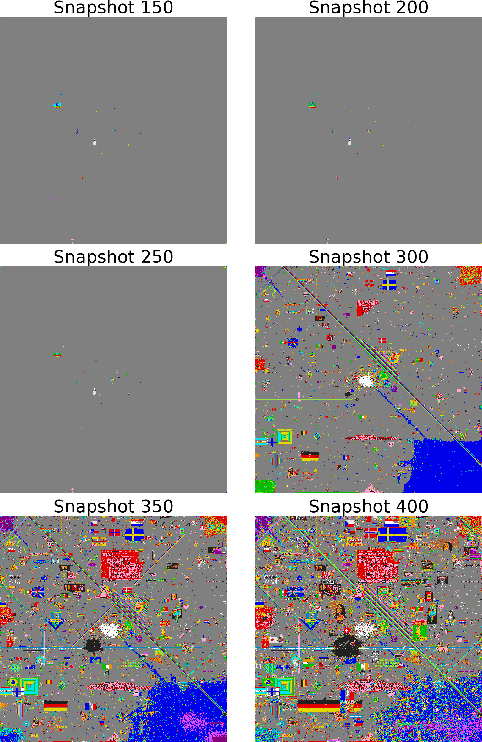
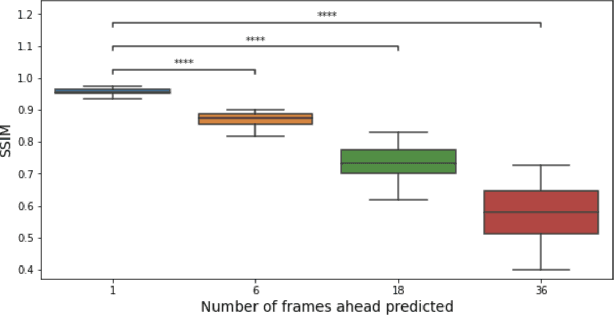
Abstract:Lately, studying social dynamics in interacting agents has been boosted by the power of computer models, which bring the richness of qualitative work, while offering the precision, transparency, extensiveness, and replicability of statistical and mathematical approaches. A particular set of phenomena for the study of social dynamics is Web collaborative platforms. A dataset of interest is r/place, a collaborative social experiment held in 2017 on Reddit, which consisted of a shared online canvas of 1000 pixels by 1000 pixels co-edited by over a million recorded users over 72 hours. In this paper, we designed and compared two methods to analyze the dynamics of this experiment. Our first method consisted in approximating the set of 2D cellular-automata-like rules used to generate the canvas images and how these rules change over time. The second method consisted in a convolutional neural network (CNN) that learned an approximation to the generative rules in order to generate the complex outcomes of the canvas. Our results indicate varying context-size dependencies for the predictability of different objects in r/place in time and space. They also indicate a surprising peak in difficulty to statistically infer behavioral rules towards the middle of the social experiment, while user interactions did not drop until before the end. The combination of our two approaches, one rule-based and the other statistical CNN-based, shows the ability to highlight diverse aspects of analyzing social dynamics.
Formal Definitions of Unbounded Evolution and Innovation Reveal Universal Mechanisms for Open-Ended Evolution in Dynamical Systems
Dec 18, 2016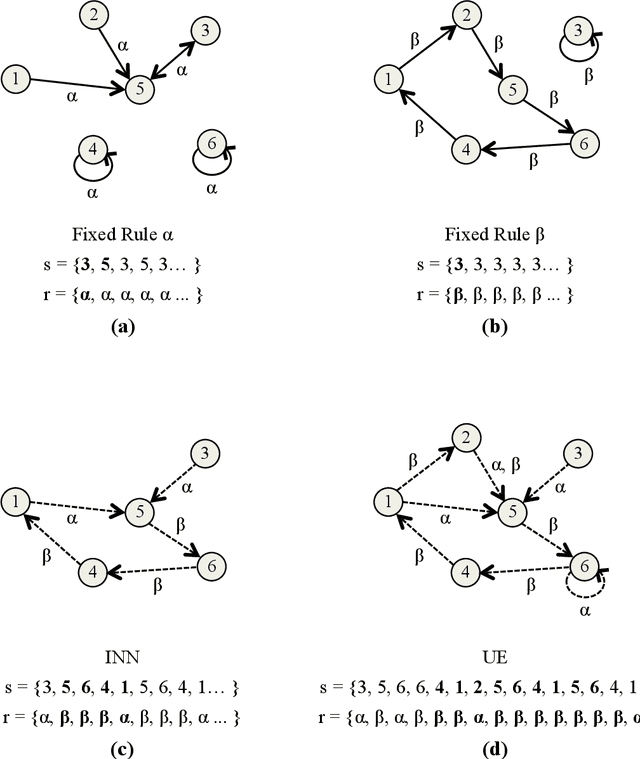



Abstract:Open-ended evolution (OEE) is relevant to a variety of biological, artificial and technological systems, but has been challenging to reproduce in silico. Most theoretical efforts focus on key aspects of open-ended evolution as it appears in biology. We recast the problem as a more general one in dynamical systems theory, providing simple criteria for open-ended evolution based on two hallmark features: unbounded evolution and innovation. We define unbounded evolution as patterns that are non-repeating within the expected Poincare recurrence time of an equivalent isolated system, and innovation as trajectories not observed in isolated systems. As a case study, we implement novel variants of cellular automata (CA) in which the update rules are allowed to vary with time in three alternative ways. Each is capable of generating conditions for open-ended evolution, but vary in their ability to do so. We find that state-dependent dynamics, widely regarded as a hallmark of life, statistically out-performs other candidate mechanisms, and is the only mechanism to produce open-ended evolution in a scalable manner, essential to the notion of ongoing evolution. This analysis suggests a new framework for unifying mechanisms for generating OEE with features distinctive to life and its artifacts, with broad applicability to biological and artificial systems.
 Add to Chrome
Add to Chrome Add to Firefox
Add to Firefox Add to Edge
Add to Edge